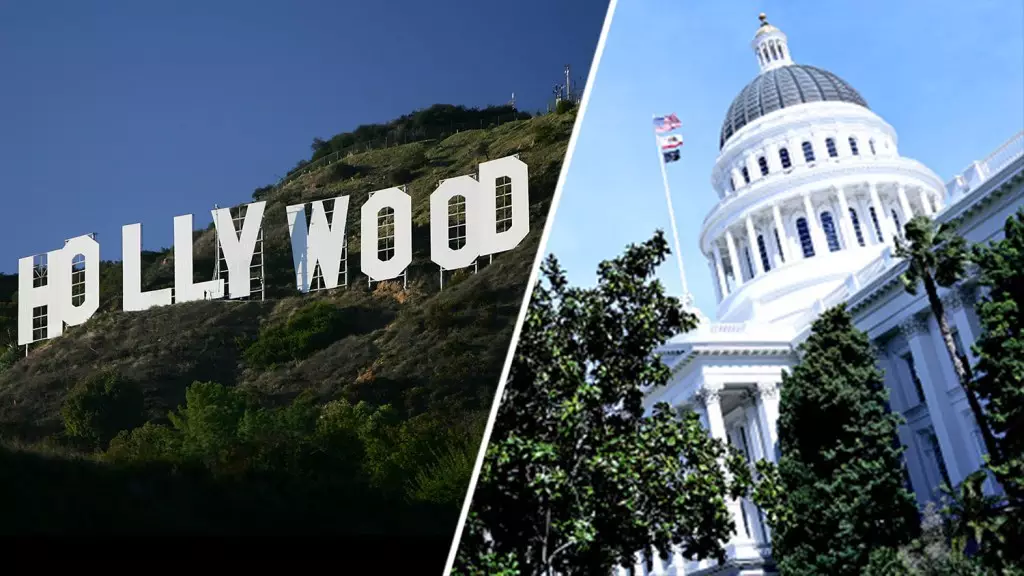In a decisive demonstration of support, the California Senate has overwhelmingly endorsed a pivotal piece of legislation aimed at revitalizing the state’s Film and Television Tax Credit Program, illustrated by the lopsided 34-1 vote on Senate Bill 630. This near-unanimous backing reflects a growing recognition of the urgency to address the challenges faced by California’s historically robust entertainment sector. The solitary dissenting voice, Senator Roger Niello from Sacramento, indicates that while consensus is strong, there remains room for debate surrounding the specifics of such expansive financial initiatives.
As the bill now awaits consideration in the Assembly, where it stands set for a critical vote on Thursday, the industry holds its breath, fully aware that this legislation could reshape the landscape of film and television production. The proposed changes are substantial—not only does it aim to expand the range of qualifying projects, but it also shifts the funding paradigm for California’s thriving, yet increasingly challenged, media production ecosystem.
Beyond Basic Funding: Expanding Opportunities
The proposed Senate Bill 630, together with Assembly Bill 1138, goes beyond merely boosting financial incentives—it seeks to redefine what qualifies as a “motion picture” under the program’s umbrella. By broadening this definition, the legislation opens doors for a diverse range of projects, including shorter episodes, animated films, and large-scale competition shows. This expanded scope is particularly significant as it acknowledges the evolving dynamics of viewing habits and the increasing popularity of varied content formats.
However, the journey to this point has been fraught with challenges. Discussions in both the Senate and Assembly Appropriations Committees saw efforts to increase the overall funding for the program stumble. An earlier iteration of the bill had proposed to double the funding cap from $330 million to a staggering $750 million annually, a move that would provide California with a robust arsenal to compete against states like New York, which actively cultivate attractive incentives for production companies. Although these funding expansions were stripped from the current proposals, the commitment expressed by Governor Gavin Newsom in his budget discussions underscores a sustained interest in fortifying California’s production environment, even if immediate financial gains appear elusive.
The Race Against Runaway Production
What motivates this legislative push is not merely economic growth; it is a strategic maneuver in a broader race against runaway production. With other states intensifying their efforts to lure filmmakers with enticing tax credits and incentives, California risks losing its once-dominant position in the entertainment industry. The latest wave of productions is consistently inching toward tax-friendly territories, and this legislative endeavor serves as a clarion call for action. New York’s recent budget, which introduced expanded incentives, serves as a stark reminder of the shifting tides—tides that California must navigate adeptly if it hopes to retain its seat at the helm of global media production.
Amidst this critical situation, the inclusion of increased credit amounts is not just a add-on; it’s a strategic necessity. Raising the individual project credit from 20% to 35% for activities in Los Angeles could be the linchpin to enticing production companies to stay within state lines. Furthermore, providing additional credits for qualifying projects outside the major metropolitan areas demonstrates an innovative approach to encouraging film and television projects in underrepresented regions, amplifying California’s economic opportunities statewide.
Political Landscape and Future Implications
Against this backdrop of proposed reforms, the political implications weave through the fabric of California’s entertainment industry. Governor Newsom’s plans, especially as they relate to potential tariffs on foreign-produced films announced by President Donald Trump, add another layer of complexity to the legislative landscape. These tariffs, which many in the industry view as an overreach, serve to emphasize the importance of reaffirmed local production initiatives.
As the state government contemplates its next steps, the focus remains squarely on the inherent value of nurturing local talent and production capabilities—an essential element for maintaining California’s status as the epicenter of the film and television industry. With both legislative and executive branches seemingly aligned toward bolstering this dynamic sector, California stands at a crossroads. The decisions made in the coming days could very well determine whether the Golden State remains a beacon for creativity and innovation in the entertainment landscape or becomes a memory of its former glory.

